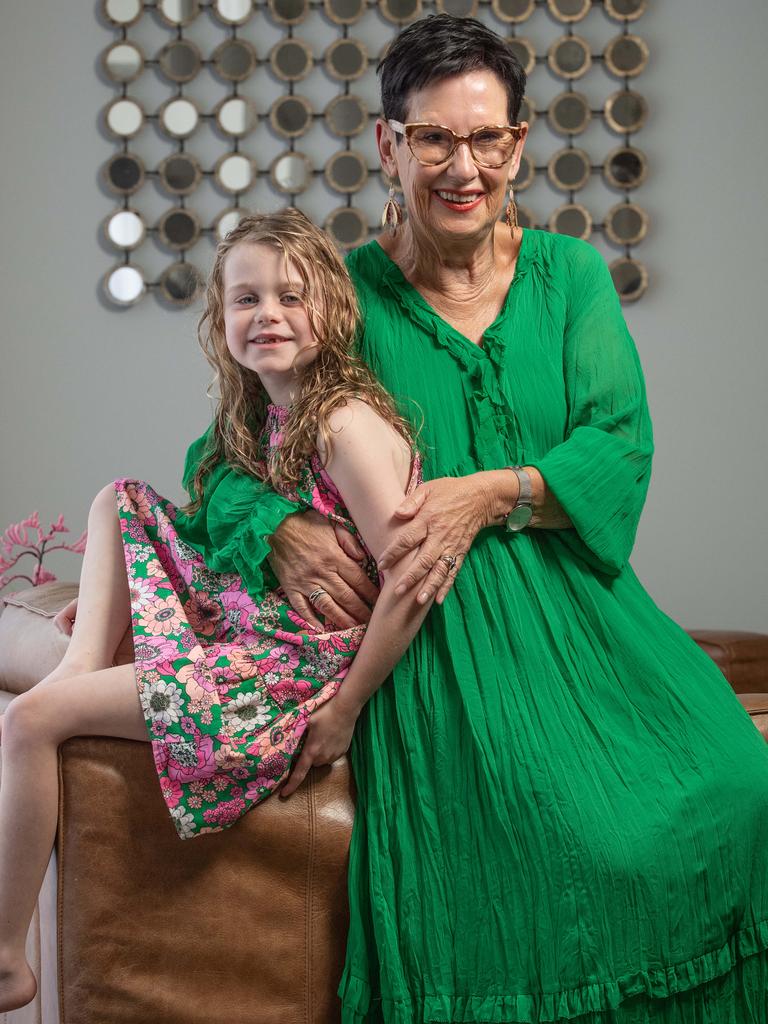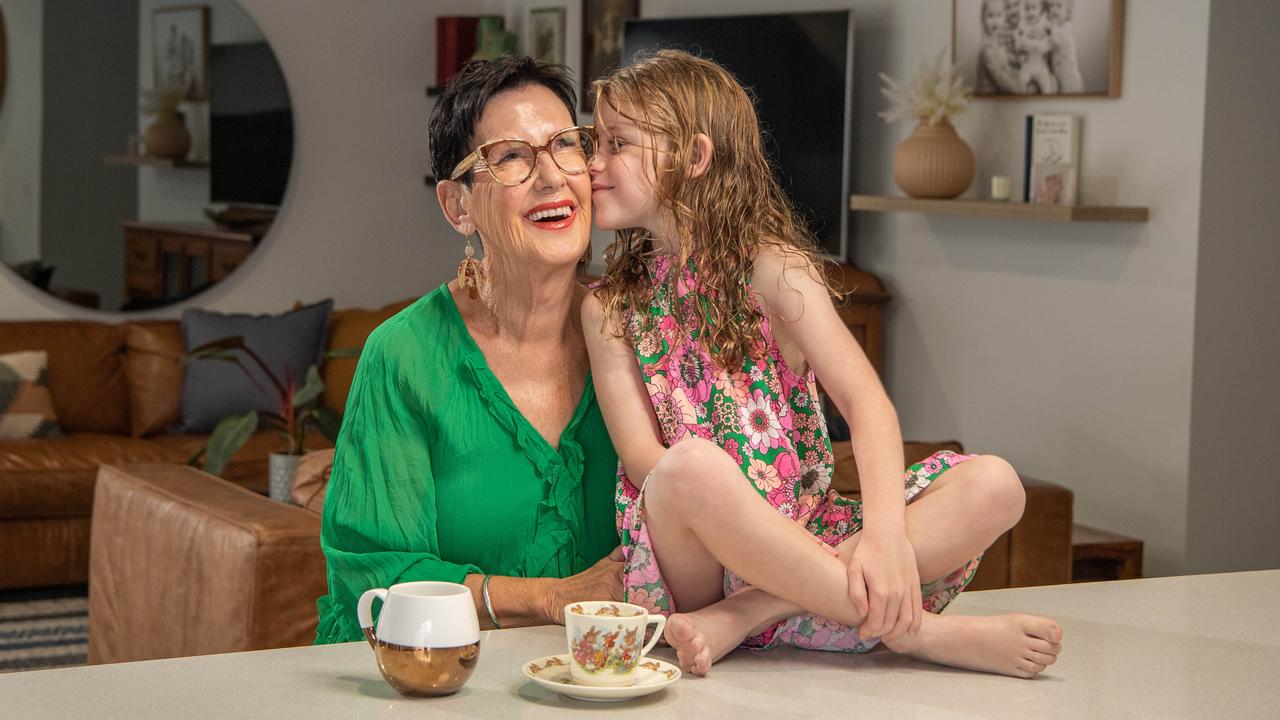Plea for Australians to register as eye and tissue donors: DonateLife
Many Australians say they’re too “squeamish” to become eye and tissue donors after death, even though these transplants can save lives – like that of Madison Pearl, 6.
The Pearl-Baker family consider themselves “lucky” to have two tissue transplant recipients living under the one roof.
Lifesaving donor tissue was transplanted into Madison Pearl’s aortic arch two months after she was born with serious heart defects.
And her grandmother, Anne Baker, received sclera (the white outer layer of the eyeball) from a donor to ensure the eye she lost to shingles could be replaced with a prosthetic one.
“We (are) very thankful that there were donors who were able to give us the opportunity – for me, to be able to aesthetically look like me again and for Madison, it actually saved her life,” Ms Baker, 68, said.
“We wouldn’t have our Madison if not for her donor.”

The family from Geelong, Victoria, are fronting a DonateLife campaign to highlight the importance of eye and tissue donation.
Australians ranked eye tissue as the body part they were least willing to donate after death in a YouGov and DonateLife poll of 1032 people last year, with skin tissue close behind.
Reasons included it felt “too personal”, made them “squeamish” and they didn’t think they were healthy enough.
While the volume of eye donors nationally crept up 0.3 per cent annually to 1477 in 2022, the numbers of living and deceased tissue donors plummeted by 18 per cent to 2472 and 12 per cent to 276 respectively, further DonateLife figures show.
Organ and Tissue Authority advisory committee member Chris Van Diemen said tissue donation was “always life-changing, but can also be lifesaving”, including for burns victims and children born with heart defects, like Madison.
“About one in every 200 surgeries performed in Australia uses human tissue grafts, so you can really see what a wide impact tissue donation has,” said Mr Van Diemen, also the Biotherapeutics Association of Australia president.
“Anyone can sign up to become an eye or tissue donor – you can never be too old or feel like you’re too unhealthy. More than half of eye donors this year were aged 70 or older, and about a third of tissue donors were, too.”
Madison was born with aortic stenosis, which caused several defects, including an aortic arch that was too narrow for blood to flow freely to her heart.
Tissue was transplanted into this arch during one of several major surgeries the now-six year old had in her first months of life, when her heart was the size of a 50-cent piece.
The thankfully tissue grew with Madison, ensuring “she doesn’t need any further surgeries at the moment”, her mum, Hannah Pearl, said.
“For her quality of life, that’s amazing,” she said. “What more could a parent ask for?”

While she is still living with heart, lung and mental health conditions, Madison has made great strides since her transplant – thanks largely to her determination and the support of her mum, father Aiden and siblings Sophia, 6, and Alex, 8.
Ms Baker contracted the shingles virus in her optic nerve 18 years ago, after extensive chemotherapy to treat blood cancer left her with a compromised immune system.
She said getting a prosthetic eye “gave me my confidence back”, allowing her to rejoin the workforce and feel like herself again.
Anyone feeling uncomfortable about donating their eyes should know “you donate the parts of your eye, not your whole eye for someone to see through,” she said.
“I know it’s not an easy decision, but I’ve ticked all the boxes to be a donor, as have all my family,” she said.
“You do so knowing, if tragedy strikes, your family isn’t having to add to their grief by making a decision about whether you should become a donor.”
It only takes one minute to register as an eye, tissue and organ donor on donatelife.gov.au, or three taps on the Medicare app.
Eye and tissue donation facts
-While only 2 per cent of people who die in Australian hospitals each year can be considered for organ donation, many more can become eye and tissue donors because tissue can be donated up to 24 hours following death, even if it occurs outside a hospital
-Tissue donation is always life-changing and can also be lifesaving
-Anyone can become an eye and tissue donor – you can never be too old, too unhealthy or have eyesight that is too bad
-Eye and tissue donation is treated like any other surgery, with incisions closed and dressed with dignity and respect, meaning donors can still have an open-casket funeral
-About one in every 200 surgeries performed in Australia uses human tissue grafts
-Many ALC repairs are thanks to a deceased tissue donor
-Bone tissue is the most transplanted tissue, while eye donation is the oldest form of transplantation
-It only takes one minute to register as an eye, tissue and organ donor on donatelife.gov.au, or three taps on the Medicare app
Source: DonateLife
Originally published as Plea for Australians to register as eye and tissue donors: DonateLife




